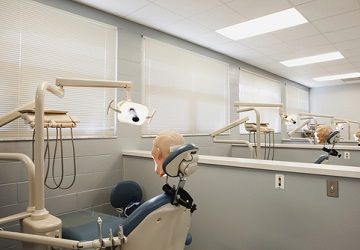Study Examines NIH Funding Benefits to Dental Institutions
Ultimately, the research team sought to identify any downward trends in monetary support from the NIH and NIDCR, since previous research examining data from 2005 to 2009 recognized a reduction in funding from the NIDCR totaling 6 percent.
has examined the trends and impact of funding provided to dental schools and institutions over a 10-year period. The study examined publicly reported data from various dental institutions from 2005 to 2014.
The goal of this study was to examine total NIH and National Institute of Dental and Craniofacial Research (NIDCR) funding provided to U.S. dental schools and dental research institutions. Ultimately, the research team sought to identify any downward trends in monetary support from either organization, since previous research examining data from 2005 to 2009 recognized a reduction in funding from the NIDCR totaling 6 percent. This result was troubling, since continued investment in dental, oral, and craniofacial research is vitally important for the improvement of the dental profession and the oral health status of the public.
Funding categories were classified as training and career development and extramural awards, which was made up of the sum of “total research grants” and “total research training” budget numbers. However, no research and development contracts were included in the study data set.
Over the 10-year time span of the current study, 56 total dental institutions received NIH awards while 55 received NIDCR award funding. Over the course of the study, the NIDCR invested a total of $1,449 million in dental institution award funding, which makes up 69.9 percent of the NIH total of $2,117 million. It was determined that the NIDCR was, by far, the largest supporter of dental institutions at the NIH.
However, during the study period, it was determined that there was a net decrease in award dollars going to dental institutions from both the NIDCR and the NIH. Awards from the NIDCR decreased by 12.8 percent, while total funding from the NIH decreased by 9.5 percent. Even though researchers noted this decrease in funding, they also determined that there have been fluctuations in support, with a trough occurring in 2014. They concluded the net 10-year decrease in funding actually reflected the trough in the year-to-year fluctuations, rather than a long-term downward trend toward decreased amounts of dental funding.
The research team further emphasized that, regardless of the decreased in total award funding provided by the NIDCR and NIH, it would be of tremendous value to the dental profession to develop strategies to enhance research capabilities at dental schools across the country.
ACTIVA BioACTIVE Bulk Flow Marks Pulpdent’s First Major Product Release in 4 Years
December 12th 2024Next-generation bulk-fill dental restorative raises the standard of care for bulk-fill procedures by providing natural remineralization support, while also overcoming current bulk-fill limitations.
